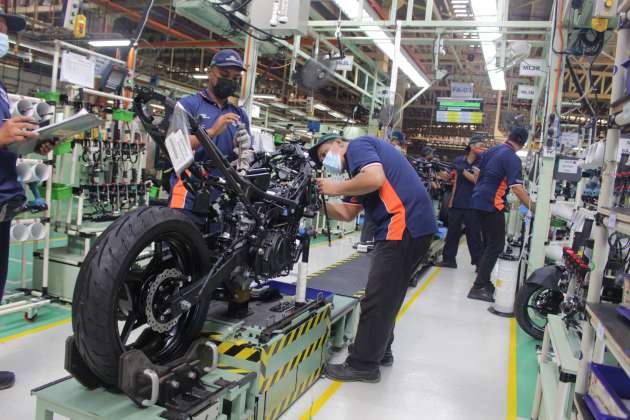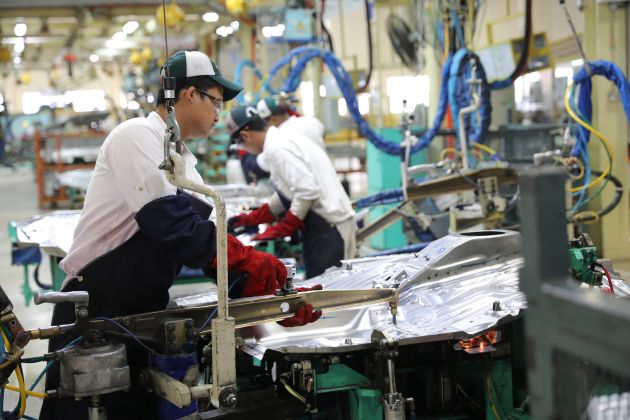In January, it was confirmed by the Malaysian Automotive Association (MAA) that government had provided a deferment for the implementation of the Excise (Determination of Value of Locally Manufactured Goods for the Purpose of Levying Excise Duty) Regulations 2019, which expired on December 31, 2024 and was supposed to take effect in January.
Had that stay (which is the latest of many) not been given, the regulations – also known as the open market value (OMV) or ‘402’ excise duty revision – would have seen seen prices of CKD locally-assembled vehicles go up by up to 30% as of this year, which would obviously not have been good news for all concerned, automotive industry and buyers alike.
The reprieve isn’t for long though, because it was also revealed that the deferment is only for another year, which means it runs out on December 31, 2025, and the new ruling is set to be implemented by January 2026.

It’s obvious that the move will have detrimental effects on the whole automotive eco-system, with the MAA already having voiced its concern about the OMV revision, and the Malaysia Automotive Component Parts Manufacturers (MACPMA) and the Motorcycle and Scooter Assemblers and Distributors Association of Malaysia (MASAAM) also stating their apprehension about the matter.
The prevailing sentiment is echoed by the Malaysian Motorcycle and Scooter Dealers Association (MMSDA), which said that manufacturers would struggle to absorb the higher duties that would inevitably come about should the OMV revision happen, and that there would be a cascading effect from that.
According to association chairman Datuk Wee Hong, motorcycle dealers would thus have to adjust their prices in accordance with the manufacturers’ pricing adjustments.

“As motorcycle dealers, our business principle is based on the cost price of goods. Buying at a higher price means selling at a higher price. If manufacturers state that the implementation of OMV will impact motorcycle prices, with an estimated increase of 10% to 20%, then motorcycle dealers will have to adjust prices accordingly,” he said in a written reply to paultan.org‘s questions on the matter.
He added that the impact of a price increase would affect smaller capacity locally assembled motorcycles the most, and with that, its buyers. “Most buyers of kapcai or motorcycles below 150 cc belong to the B40 income group, who rely on these motorcycles as their main means of livelihood. A price increase would undoubtedly add to their financial burden,” he stated.
Wee said the MMSDA is firmly on the same page with other industry associations on the matter. “We are willing to collaborate with stakeholders in the motorcycle industry to urge the government to review its decision not to further extend OMV 402 in order to maintain price stability and avoid negatively impacting the B40 community. This will also help prevent disruptions to the growing gig economy,” he said.

However, the association is preparing contingency plans should the new OMV come into place. “Dealers will monitor market demand and changes while adjusting the services and offers provided to customers — such as complimentary helmets, raincoats and other benefits — to mitigate the adverse effects of price increases on the market.” he explained.
The controversial ‘402’ – gazetted on the last day of 2019 – stipulated a new methodology of calculating a CKD vehicle’s open market value (OMV), which influences how much tax is to be paid and therefore, its selling price.
Under the revision, OMV – which is defined as the final market value of a CKD vehicle ex-factory before the government imposes excise duties on it – is set to include not just the profit and general expenses incurred or accounted in the manufacture of a vehicle, but also of its sale, the latter being where the contention is currently centred.

The regulations were supposed to come into force in 2020, but 22 days into that pandemic year, MAA announced that the finance ministry had deferred implementation to 2021. By end-2020, it was deferred again, and MAA appealed to the government in 2022 for continued deferment. This was successful, with a two-year deferment being granted until December 31, 2024. The current deferment is until December 31, 2025.
While the government undoubtedly wants to increase its coffers, introducing the new OMV is probably not the best way to go about it, because it would not just affect the competitiveness of the local automotive market but ultimately burden consumers. Indeed, given the many reprieves that have surfaced, it’s obvious that very few people think the new calculation methodology is a good idea.
Such a blanket move would also go against the current government’s “tax the rich” approach of late, and so perhaps the High Value Goods Tax (HVGT) – which has been put on hold – should be revisited if new tax streams are being looked at.
Looking to sell your car? Sell it with Carro.


